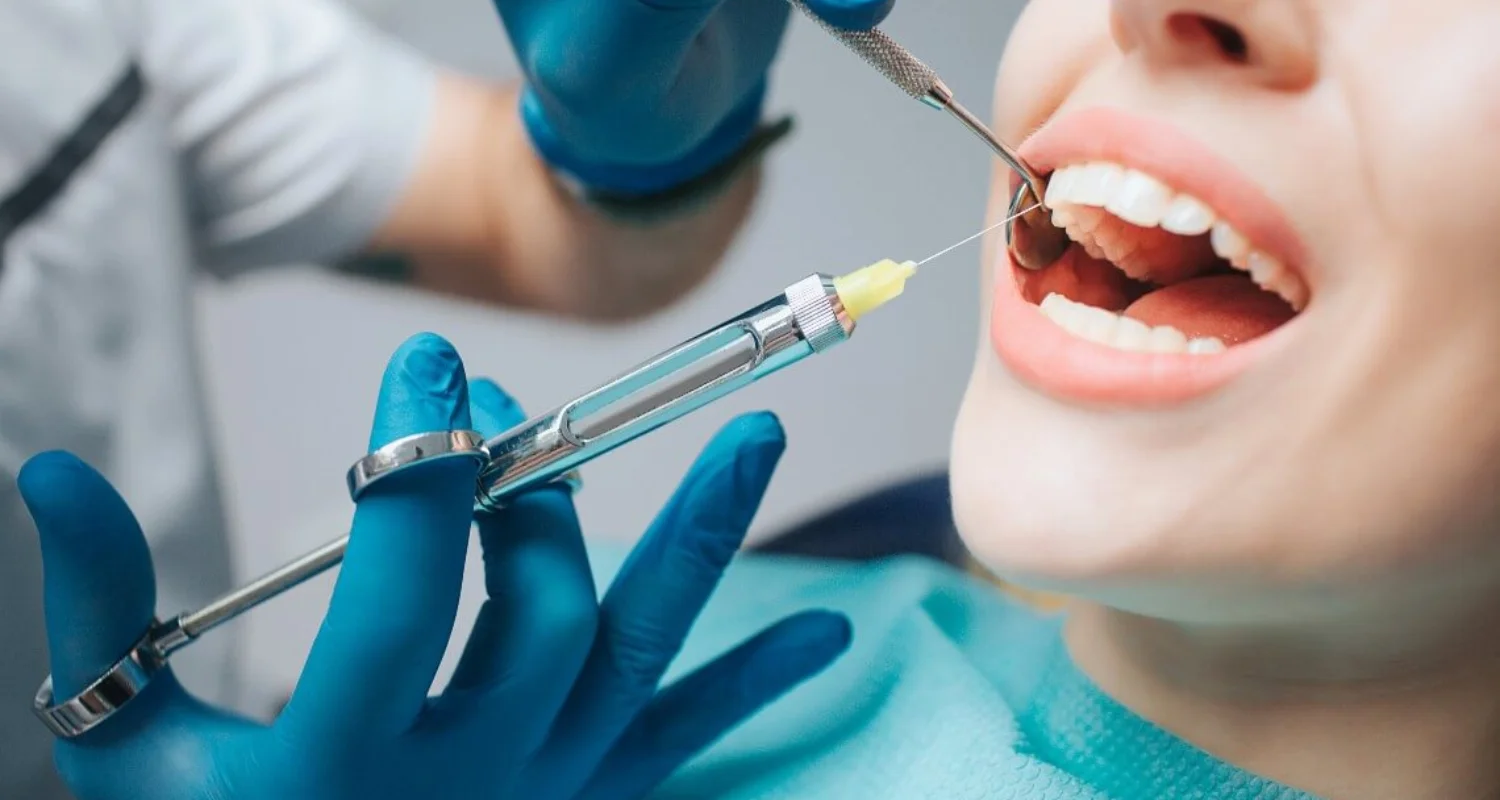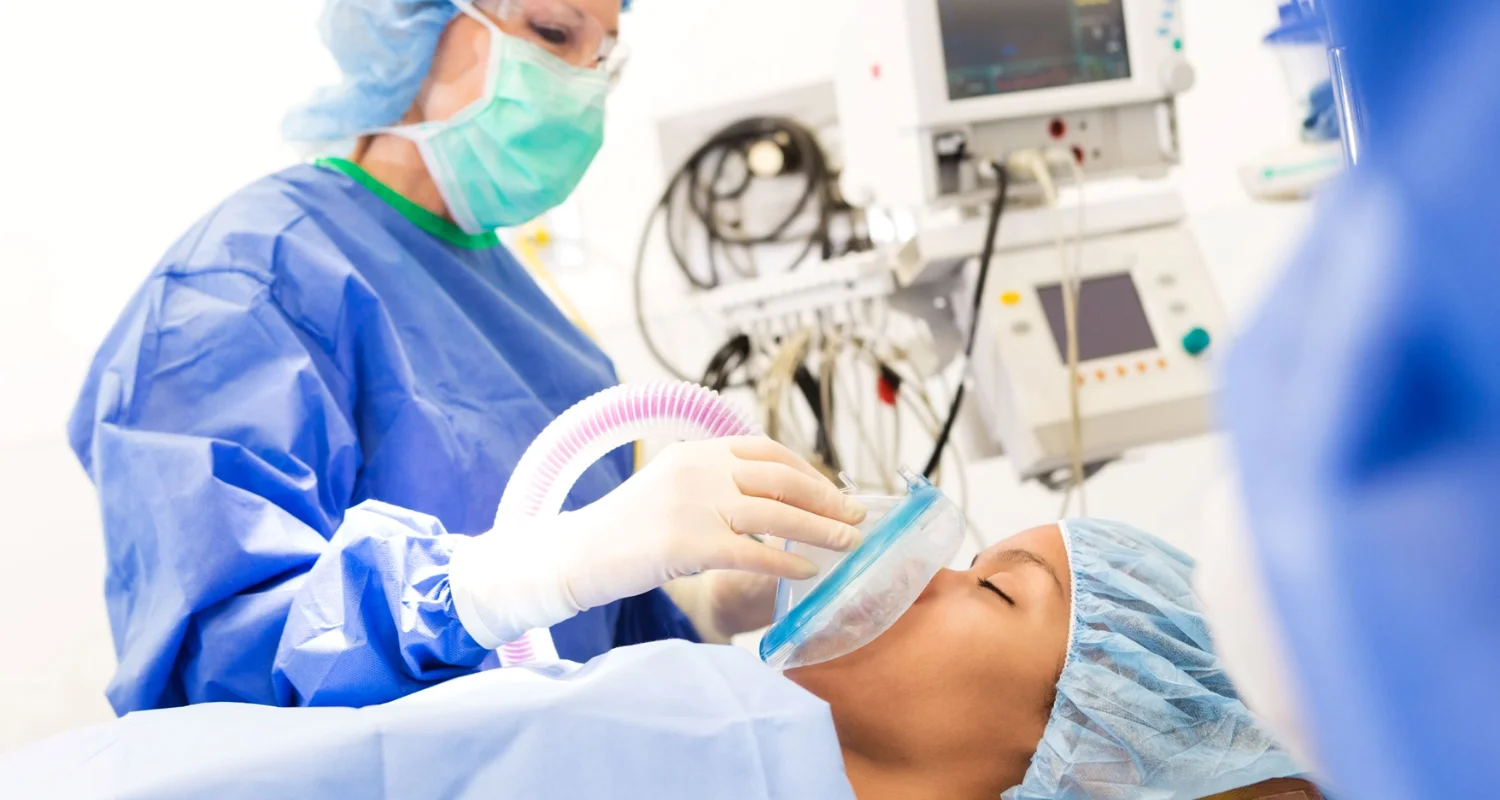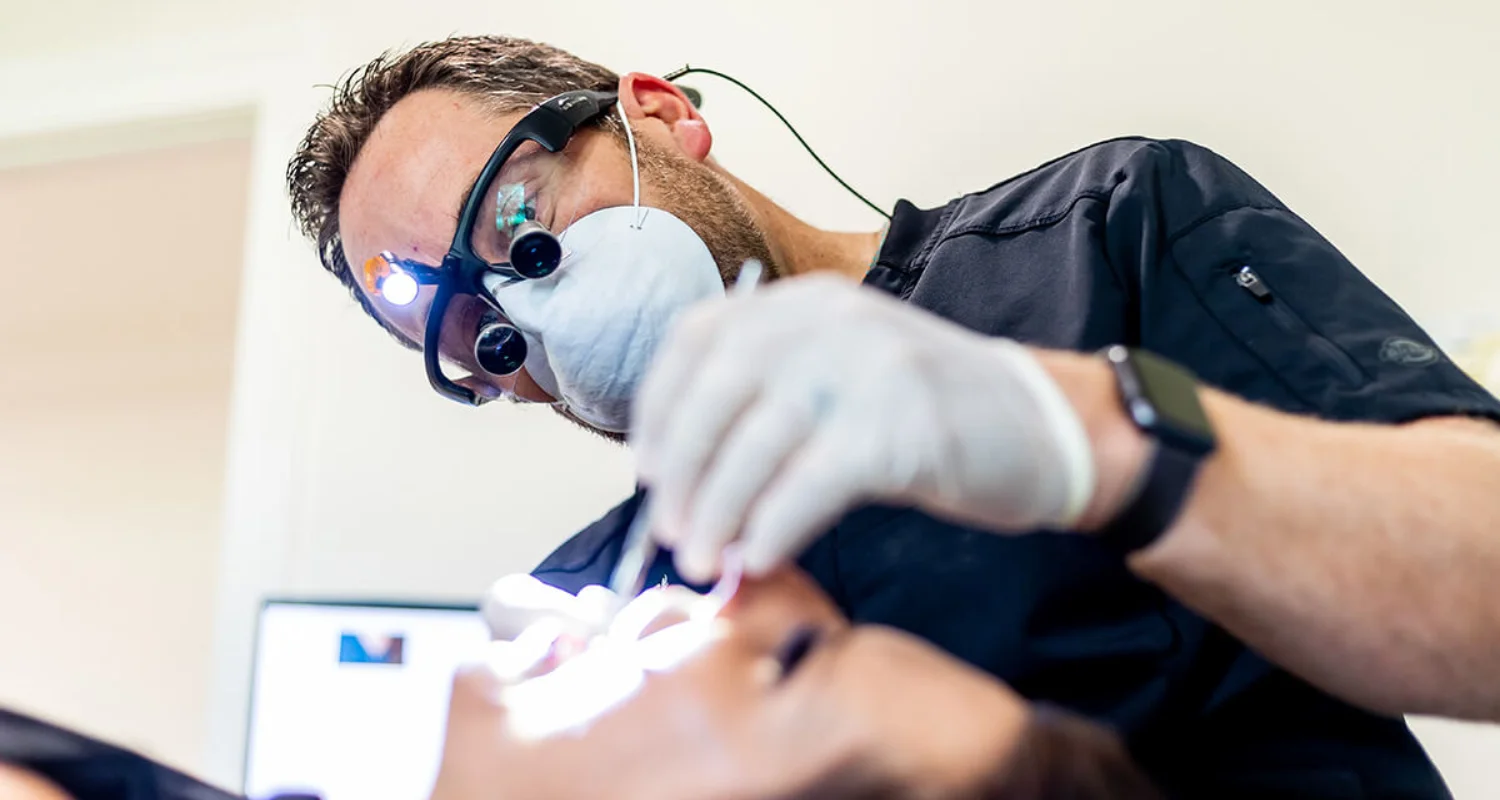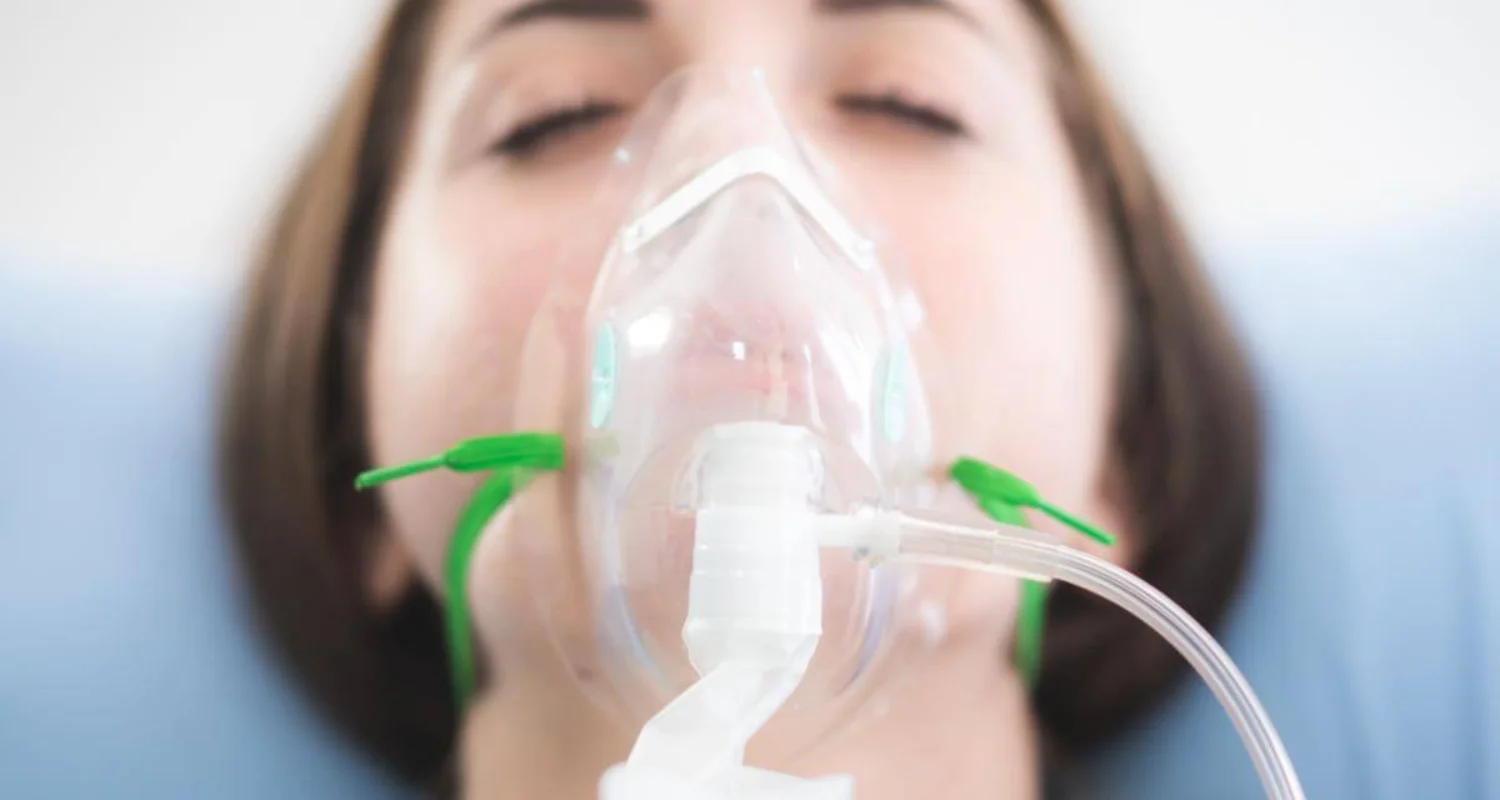Last Updated on: 13th December 2025, 07:07 am
Modern oral rehabilitation techniques were impossible before the advent of dental anesthesia. Before its discovery, treatments were performed without pain relief, leading to extreme discomfort and trauma. In 1847, an American dentist, Horace Wells, was the first to demonstrate the anesthetic effects of nitrous oxide, using it to extract a painful wisdom tooth.
Various types of dental anesthesia have since been developed and are widely used by dental professionals globally. With numerous options available, choosing the right type of anesthesia can be both simple and complex. This article explores the different types of dental anesthesia, their uses, benefits, and associated risks.
What are the benefits of dental Anesthesia?
Dental anesthesia has successfully revolutionized modern-day dentistry. It offers many benefits such as:
● Combines multiple appointments into one.
● Blocks pain during the procedure.
● Can be paired with sedation to reduce anxiety and discomfort.
● Safe and effective when properly administered.
It is important to note that anesthesia does not induce sleep; the patient will remain awake during the procedure (unless general anesthesia is used).
What are the different types of Dental Anesthesia?
Broadly, there are three different types of dental anesthesia: local anesthesia, conscious sedation, and general anesthesia. Each serves specific purposes for pain control.
Dentists choose the most suitable anesthesia for each patient based on:
● The procedure type (invasive or minor).
● The patient’s preferences and needs.
● The patient’s medical history.
While it’s important for patients to have a basic understanding of the various types of dental anesthesia, many are unaware of what is actually being used. Continue reading to gain a better understanding and learn more!
Local anaesthesia
Local anesthesia is crucial for pain management in dentistry, as dental treatments often involve mechanical, thermal, or chemical stimuli that can trigger pain. It numbs targeted areas of your mouth, allowing you to remain awake and communicate with the dentist during the procedure.
The numbing effect typically lasts for several hours after the treatment, depending upon the anesthetic used. Local anesthesia is commonly used for minor dental procedures, such as cavity fillings, tooth extractions, root canals, dental crown placements, as well as scaling and root planing.
Common dental anesthetics include lidocaine, prilocaine, mepivacaine, etc, and are also available as prescription or over-the-counter products in various forms, including gels, creams, liquids, ointments, sprays, patches, and injectables.
If you want to know more, check it here!
Unlike a general anesthetic, a local does not induce loss of consciousness; consequently, it is generally safer, does not typically require special preparation, and offers a quicker recovery.
Sedation
Sedation in dentistry is primarily used to help manage anxiety, alleviate pain, and keep the patient calm and relaxed during procedures. This form of sedation, often referred to as conscious sedation, sleep medicine, or “twilight sleep,” allows patients to remain awake yet deeply relaxed.
It induces a state of short-term amnesia, where patients experience pain insensitivity without losing consciousness. Sedation levels can range from mild to deep:
● Mild sedation: The patient remains fully alert and responsive.
● Moderate sedation: The patient is semi-conscious and may respond to verbal cues.
● Deep sedation (Monitored Anesthesia Care, MAC): The patient is largely unaware of their surroundings and only reacts to repeated or painful stimuli.
Dentists use three main types of sedation based on the procedure’s needs: oral sedation, inhalation sedation (nitrous oxide), and intravenous (IV) sedation. The most common medications used include diazepam, midazolam, and nitrous oxide.
However, sedation dentistry is particularly beneficial for patients with:
● Dental anxiety or phobia.
● Medical conditions that stress could worsen.
● Mental disabilities.
● Those undergoing lengthy or complex procedures.
● Severe gag reflex.
It is also useful for patients, such as children, who may struggle with cooperation during dental treatments. While sedation is generally safe, it carries potential side effects such as neurotoxicity, renal toxicity, diffusion hypoxia, nausea, and vomiting.
The risks are minimal but may include drowsiness, dry mouth, headaches, and memory loss. Consult a dental healthcare professional to better understand what suits you best.
General anesthesia
General anesthesia is used for longer procedures, or if the patient exhibits a lot of anxiety that might interfere with their treatment. Under general anesthesia, the patient will be completely unconscious, experience no pain, have relaxed muscles, and retain no memory of the procedure.
This type of anesthesia is often referred to as a medically induced coma. The patient will be unresponsive during the entire procedure. The medication is normally inhaled or administered intravenously. Propofol, ketamine, diazepam, and midazolam are a few commonly used general anesthetic agents.
General anesthesia is typically administered in a hospital setting for major oral surgeries, such as:
● Removal of multiple teeth.
● Surgery for oral cancer.
● Procedures for sleep apnea.
● Cosmetic dental interventions.
● Repair of cleft lip or palate.
It is indicated in dental treatment for patients who are unable to manage their behavior, such as those with moderate to severe intellectual disabilities, complex medical conditions, or severe dental phobia.
It is also commonly used for very young pediatric patients with advanced full-mouth caries or those who are extremely uncooperative during dental procedures. However, general anesthesia is contraindicated in patients with conditions such as porphyria, hypovolemic shock, or hypersensitivity to barbiturates.
Note: It is crucial for patients to inform their oral healthcare professional of these or any other medical conditions to ensure the safe and appropriate use of anesthesia.
Risks associated with dental anesthesia
The risks of dental anesthesia include:
● Allergy: Avoid if allergic to the anesthetic or its ingredients.
● Hepatic/renal impairment: Use lower doses due to altered metabolism.
● Cardiovascular disease: Limit adrenaline to 0.04 mg; avoid certain injection techniques with adrenaline.
● Elderly patients: Use reduced doses due to decreased organ function and higher cardiovascular risk.
● Bleeding disorders/anticoagulants: Prefer local infiltration.
● Additional concerns: Exercise caution in patients with heart failure, heart attack, stroke, low blood pressure, or malignant hyperthermia.
Precautions to be taken
When considering dental anesthesia, specific precautions are necessary based on individual circumstances, such as:
● Pregnancy: Discuss risks and benefits with your dentist to protect both the mother and the child.
● Special needs: Evaluate and adjust doses for children and individuals with special needs. Avoid numbing agents for teething in children under 2 years of age.
● Older adults: Adjust doses and monitor due to health issues and risk of post-surgery confusion.
● Health conditions: Adjust dosages for liver, kidney, lung, or heart problems, as drug effects may last longer.
● Neurologic conditions: Higher anesthesia risks for those with stroke, Alzheimer’s, Parkinson’s, or other neurological disorders.
● Other conditions: Inform your dentist if you have acid reflux, mouth infections, or use drowsiness-inducing medications like opioids, wherein the use of dental anesthesia might not be appropriate.
Understanding the different types of anesthesia used in dentistry is key to ensuring a safe and comfortable experience during a dental procedure. Whether choosing local, sedation, or general anesthesia, each option has its unique applications, benefits, and risks.
By discussing these options with their dentist and considering their personal health needs, patients can make choices that best suit their preferences and circumstances.
Frequently Asked Questions
What type of anesthesia is used for dental work?
For dental work, the most common type of anesthesia used is a local anesthesia. This type numbs a specific area of the mouth, allowing the patient to remain awake and comfortable during procedures like fillings, extractions, and root canals. Local anesthetics, such as lidocaine, are injected into the gum tissue around the treatment area, blocking the nerves from transmitting pain signals to the brain.
What types of anesthesia or sedation are available for oral surgery procedures?
Oral surgery procedures may require different levels of anesthesia or sedation depending on the complexity of the surgery and the patient’s needs. The options include:
● Local anesthesia: Numbs a specific area, used for minor surgeries.
● Nitrous oxide (laughing gas): Provides mild sedation to help patients relax.
● Oral sedation: Involves taking a pill to reduce anxiety, ranging from mild to moderate sedation.
● Intravenous (IV) sedation: Offers deeper sedation, keeping the patient in a twilight state of consciousness.
● General anesthesia: Renders the patient completely unconscious, used for more extensive surgical procedures.
Can you explain the different anesthesia options available for dental surgery and their pros and cons?
Here are the primary anesthesia options for dental surgery, along with their pros and cons:
● Local anesthesia:
Pros: Keeps the patient awake, quick recovery, minimal side effects.
Cons: May not be sufficient for patients with severe anxiety or during more complex surgeries.
● Oral sedation:
Pros: Reduces anxiety, easy to administer, keeps the patient conscious but relaxed.
Cons: Can cause drowsiness, some memory loss, and requires someone to drive the patient home.
● IV sedation:
Pros: Deep sedation, the patient remains conscious but less aware, quick onset.
Cons: Requires an IV line, some recovery time needed, and patients may not remember the procedure.
● General anesthesia:
Pros: Complete unconsciousness, no awareness or memory of the procedure, ideal for extensive surgeries.
Cons: Requires hospital setting, longer recovery time, higher risk of side effects, and not suitable for everyone.
What do oral surgeons use for sedation?
Oral surgeons typically use IV sedation or general anesthesia for sedation during more complex procedures. IV sedation allows the patient to be in a deeply relaxed state while still maintaining consciousness, making it ideal for procedures like wisdom tooth extractions or dental implants. For very invasive surgeries or patients with high anxiety, oral surgeons may opt for general anesthesia to ensure that the patient is completely unconscious and unaware of the procedure.
Which dentists have oral sedation?
Oral sedation is offered by many general dentists, periodontists, and oral surgeons, especially those who treat patients with dental anxiety or who perform complex procedures. Dentists who provide oral sedation typically have special training and certifications to ensure the safe administration of sedatives. This service is often available in practices that focus on providing comfortable and stress-free dental care, catering to patients who may have phobias or require more involved dental treatments.
Share
References
1. Mathison, M., & Pepper, T. (2023). Local Anesthesia Techniques in Dentistry and Oral Surgery. In StatPearls. StatPearls Publishing. https://www.ncbi.nlm.nih.gov/books/NBK580480/
2. Wang, Y. H., Wang, D. R., Liu, J. Y., & Pan, J. (2021). Local anesthesia in oral and maxillofacial surgery: A review of current opinion. Journal of dental sciences, 16(4), 1055–1065. https://doi.org/10.1016/j.jds.2020.12.003
3. Decloux, D., & Ouanounou, A. (2020). Local anaesthesia in dentistry: a review. International dental journal, 71(2), 87–95. Advance online publication. https://doi.org/10.1111/idj.12615
4. Malini G. (Dec, 2013). What You Need to Know About Dental Anesthesia. Healthline. https://www.healthline.com/health/dental-and-oral-health/dental-anesthesia
5. Alyssa H. (Feb, 2024). Dental Anesthesia. New mouth. https://www.newmouth.com/dentistry/general/anesthesia/
6. Axtel,l B., Weatherspoon, D. (May, 2023). Side Effects of General Anesthesia: What to Expect. Healthline. https://www.healthline.com/health/side-effects-of-general-anesthesia
-
Nayibe Cubillos M. [Author]
Pharmaceutical Chemestry |Pharmaceutical Process Management | Pharmaceutical Care | Pharmaceutical Services Audit | Pharmaceutical Services Process Consulting | Content Project Manager | SEO Knowledge | Content Writer | Leadership | Scrum Master
View all posts
A healthcare writer with a solid background in pharmaceutical chemistry and a thorough understanding of Colombian regulatory processes and comprehensive sector management, she has significant experience coordinating and leading multidisciplina...




















